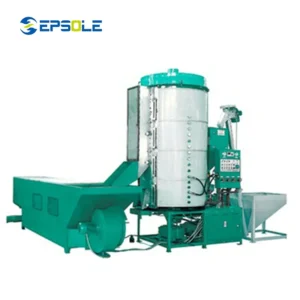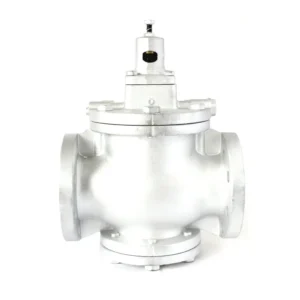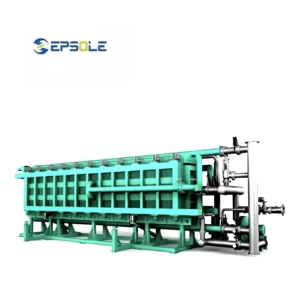Ever wondered how those ubiquitous white foam products, from coffee cups to insulation boards, come to life? It all begins with tiny plastic beads and a fascinating transformation. This blog post will demystify the process, showing you exactly how raw polystyrene turns into the versatile material we know as Styrofoam.
Contact us as we journey from seemingly insignificant polystyrene beads through a series of ingenious steps, ultimately revealing the secrets behind the creation of lightweight, durable, and incredibly useful EPS foam.
What is Styrofoam?
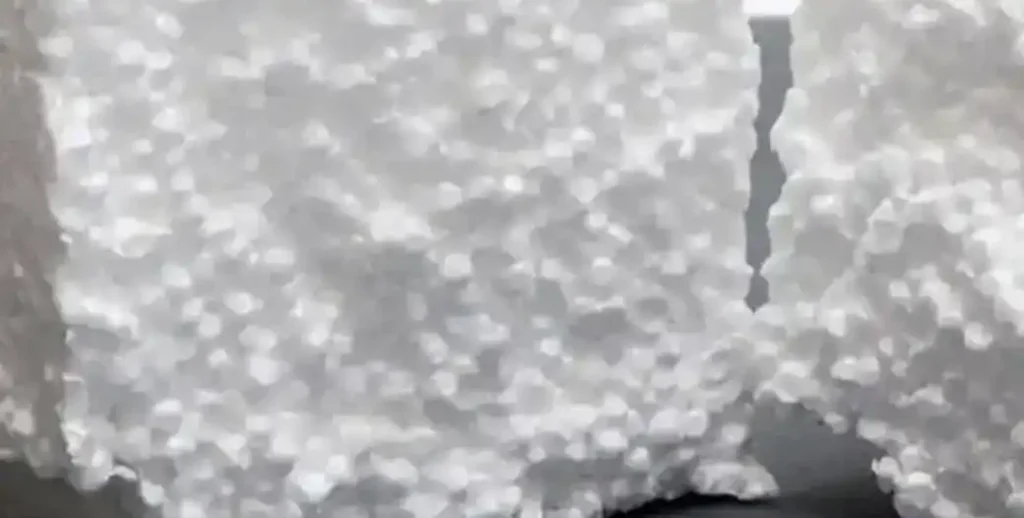
Styrofoam is a brand name for a type of expanded polystyrene foam.
“Styrofoam” is a brand name for a specific type of extruded polystyrene foam (XPS) manufactured by DuPont. While often used colloquially to refer to all white, lightweight foam, the vast majority of what people call “Styrofoam” in everyday life (like coffee cups, packaging peanuts, and coolers) is actually Expanded Polystyrene (EPS) foam.
Here are key distinctions and characteristics of Styrofoam:
Styrofoam (XPS):
- Type of Foam: Extruded Polystyrene (XPS) foam.
- Appearance: Typically blue or pink in color.
- Structure: Closed-cell structure, giving it a smooth surface and excellent resistance to water absorption and vapor transmission.
- Primary Use: Primarily used for continuous building insulation boards in walls, roofs, and foundations.
Expanded Polystyrene (EPS):
- Generic Term: The common white foam encountered daily.
- Type of Foam: Expanded Polystyrene (EPS) foam.
- Appearance: Usually white, with a beaded texture.
- Structure: Composed of many small, fused polystyrene beads with air pockets, giving it a lightweight, rigid, and insulating nature.
- Primary Uses: Widely used for disposable coffee cups, food containers, protective packaging (cushioning for electronics, etc.), and as insulation and geofoam in construction.
What Are the Ingredients of Styrofoam?
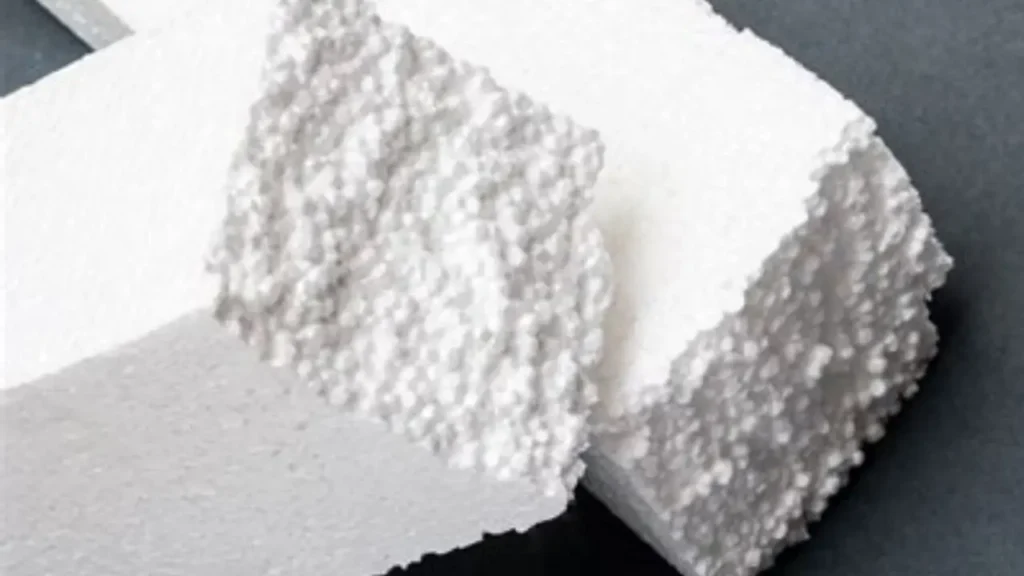
Styrofoam, which is actually a trademarked brand of extruded polystyrene foam (XPS) by DuPont, is primarily composed of polystyrene. This polystyrene is derived from styrene, a petroleum-based product. During manufacturing, a blowing agent is added to expand the polystyrene into a foam, making it lightweight and insulating.
The key ingredients are:
- Additives (optional): Depending on the desired properties of the final product, other chemicals like flame retardants or colorants may be included.
- Polystyrene: The main plastic component, formed through the polymerization of styrene.
- Styrene: A liquid hydrocarbon derived from petroleum, which is the monomer (building block) for polystyrene.
- Blowing Agent: Typically a gas like pentane or carbon dioxide, which expands the polystyrene to create the characteristic foam structure.
How to Make Styrofoam?
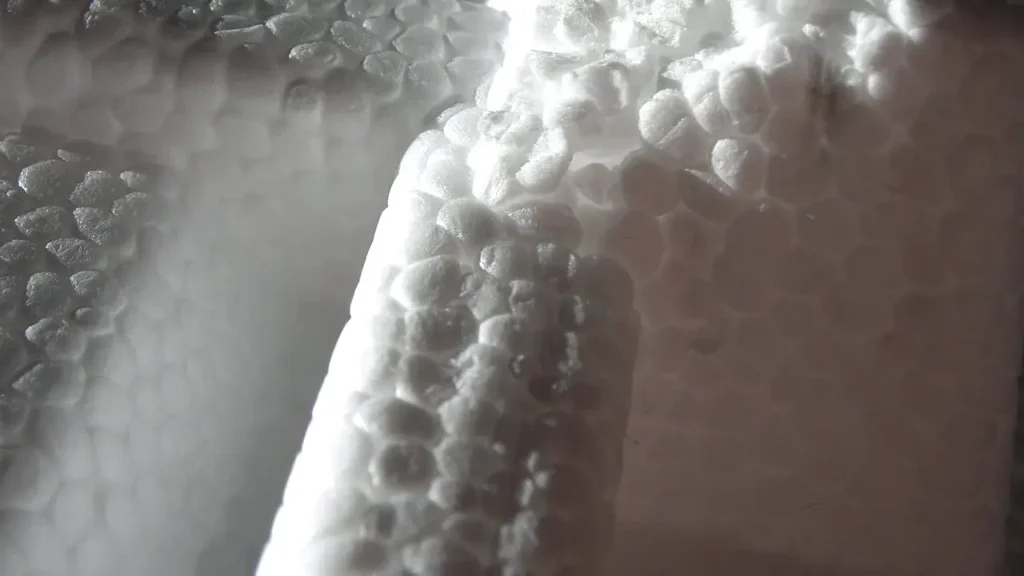
Have you ever wondered about the fascinating journey of polystyrene beads transforming into the lightweight, versatile material we commonly call Styrofoam? It’s a surprisingly intricate process involving steam, expansion, and precise molding.
Let’s delve into the styrofoam manufacturing process in the following:
Step 1. Raw Material: Polystyrene Beads
The journey of Styrofoam begins with tiny, solid beads of polystyrene resin. These small, often spherical, plastic pellets are the fundamental building blocks. They contain a blowing agent, typically pentane, which is crucial for the expansion process that will soon transform them into lightweight foam. These beads are rigorously inspected to ensure purity and consistency, as their quality directly impacts the final foam product.
These uniform beads are stored in large silos, ready for the next stages of manufacturing. Their compact form makes them efficient to transport and store before they undergo the significant volume increase that defines expanded polystyrene. The integrated blowing agent within each bead is a key innovation, enabling the rapid expansion later in the process.
Step 2. Pre-Expansion
In the pre-expansion stage, the polystyrene beads are introduced into a pre-expander vessel where they are exposed to steam. The heat from the steam causes the pentane blowing agent within the beads to volatilize and expand, simultaneously softening the polystyrene. This rapid expansion dramatically increases the volume of each bead, much like popcorn popping, forming tiny, closed-cell foam spheres.
The duration and temperature of the steam exposure precisely control the final density of the EPS foam. For lower density foam, the beads are expanded more; for higher density, they are expanded less. After expansion, the beads are conveyed to large breathable bags or silos, where they are allowed to “age” or stabilize. This aging period allows air to diffuse into the cells of the beads, replacing some of the pentane, which prepares them for the subsequent molding process and prevents shrinkage.
Step 3. Molding
The pre-expanded beads are then transferred to a mold, typically made of aluminum, which defines the final shape of the Styrofoam product (e.g., EPS blocks, EPS sheets, custom packaging). More steam is injected into the mold, causing the beads to soften further and expand slightly more, forcing them to fuse together and fill the entire cavity of the mold. The steam also helps to create strong bonds between the individual beads.
Once fully molded, the block or shape is cooled using water spray or vacuum to solidify the polystyrene and set its final dimensions. This cooling step is critical to prevent deformation and ensure the structural integrity of the finished product. After cooling, the molded EPS product is ejected from the mold, ready for further processing like cutting or finishing.
What is Styrofoam Made Out Of?
Styrofoam, a trademarked brand by Dow Chemical, is primarily made from polystyrene, a synthetic polymer derived from petroleum. While often used generically, true Styrofoam (extruded polystyrene foam or XPS) is distinct from expanded polystyrene foam (EPS), which is commonly found in disposable cups and packaging. Regardless of the specific type, the fundamental composition involves expanding polystyrene into a lightweight, foamed material.
- Air: The final product, whether XPS or EPS, is overwhelmingly air, typically around 95-98%. This high air content is what gives it its excellent insulating and lightweight properties.
- Polystyrene: This is the base plastic, made from styrene monomers (a liquid hydrocarbon).
- Blowing Agent: A substance like pentane or hydrofluorocarbon is used to create gas bubbles, causing the polystyrene to expand and form the foam structure.
The Air in Styrofoam Makes It a Good Insulator
The reason Styrofoam excels as an insulator lies in its high air content and unique structure. Heat primarily transfers through conduction, convection, and radiation. Styrofoam’s foamed nature, consisting of countless tiny, trapped air pockets within a polystyrene matrix, significantly impedes these heat transfer mechanisms.
- Minimized Radiation: While less significant than conduction and convection in this context, the multi-cellular structure can also help scatter and reflect some radiant heat, further contributing to its insulating properties.
- Trapped Air: Air itself is a poor conductor of heat. By trapping air in small, isolated cells, Styrofoam prevents the air molecules from freely circulating and transferring heat through convection. If the air were able to move, it would carry heat away from warmer areas to colder ones.
- Reduced Conduction: The polystyrene material that forms the cell walls is also a poor conductor of heat. The small amount of solid material, combined with the extensive air pockets, creates a barrier that slows down the transfer of heat through the material itself.
When Was Styrofoam Invented?
The specific product known as Styrofoam™, a brand of extruded polystyrene (XPS) foam, was invented by Ray McIntire at Dow Chemical Company. He patented the process for creating this closed-cell foamed polystyrene in 1944.
Here are some key points about its invention:
- Distinction: It’s crucial to remember that “Styrofoam” is a specific brand of XPS foam, which is distinct from the more common Expanded Polystyrene (EPS) foam found in everyday items like disposable cups and packaging, though both are types of polystyrene foam.
- Inventor: Ray McIntire, a chemical engineer at Dow Chemical.
- Year of Invention/Patent: 1944.
- Accidental Discovery: McIntire’s discovery was somewhat accidental. He was trying to develop a rubber-like substance for electrical insulation during World War II and, through experimentation, found that combining styrene with isobutylene created a foam with tiny bubbles that was much lighter and more flexible than solid polystyrene.
- Purpose: Initially used for flotation devices due to its buoyancy and for insulation.
Is Styrofoam Harmful?

Styrofoam can be harmful in several ways:
Environmental Impact
- It is not biodegradable and takes a very long time to decompose in the environment. This leads to significant pollution and accumulation in landfills and natural habitats.
- When Styrofoam waste ends up in the ocean, it can harm marine life. Animals may mistake it for food and ingest it, causing digestive problems and even death.
Health Concerns
- Some studies suggest that the chemicals used in the production and processing of Styrofoam may have potential health risks, especially if they leach into food or beverages when in contact.
However, when used and disposed of properly, and in controlled circumstances, the immediate harm can be minimized. But overall, the long-term and widespread use of Styrofoam has raised significant environmental and potential health concerns.
Why Do We Still make Styrofoam?
Despite its significant environmental drawbacks, Styrofoam (expanded polystyrene foam, or EPS) continues to be widely manufactured and used due to a combination of economic advantages and practical properties that are hard to replicate at the same cost.
Here are the primary reasons why we still make Styrofoam:
Cost-Effectiveness: Styrofoam is incredibly cheap to produce. It’s mostly air (up to 98%), requiring minimal raw material (polystyrene derived from petroleum) for a large volume of product. This makes it a very attractive option for businesses operating on thin margins, such as those in the food service industry.
Lightweight Nature: Its extreme lightness translates to lower transportation costs for packaged goods and lighter construction materials, further reducing overall expenses for businesses.
Excellent Insulation Properties: Styrofoam is a highly effective thermal insulator. This makes it ideal for:
Food and Beverage Containers: Keeping hot food hot and cold drinks cold, which is crucial for takeout and convenience.
Building Insulation: Reducing energy consumption for heating and cooling in homes and commercial buildings, contributing to energy efficiency.
Packaging Temperature-Sensitive Goods: Protecting pharmaceuticals and perishable foods during transit.
Shock Absorption/Protective Packaging: Its rigid yet cushioned structure makes it excellent for protecting fragile items like electronics, appliances, and glassware during shipping, significantly reducing product damage.
Moisture Resistance: Styrofoam repels moisture, preventing degradation in damp environments and protecting contents from water damage. This is particularly useful in food packaging and construction.
Versatility and Moldability: It can be easily cut, shaped, and molded into various forms, allowing for custom-designed packaging inserts, construction panels, and even artistic creations.
Sanitary Properties: For food contact, it’s considered safe and doesn’t readily support bacterial growth.
While efforts are being made to ban or phase out Styrofoam in many regions due to its environmental impact and poor recyclability, its established infrastructure and the lack of equally cost-effective and functionally similar alternatives mean it remains a pervasive material in many industries.
Can You Eat Styrofoam?
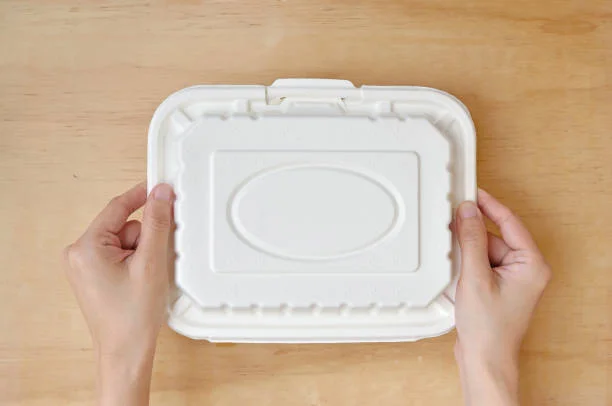
No, you cannot eat Styrofoam (Expanded Polystyrene or Extruded Polystyrene foam). While it’s generally considered non-toxic in the sense that it won’t immediately poison you if a tiny piece is accidentally ingested, it is absolutely not food and should never be consumed intentionally. Styrofoam is a plastic material that our bodies cannot digest or break down.
If ingested, Styrofoam will pass through the digestive system largely unchanged. While small pieces might pass without incident, larger pieces could potentially cause choking hazards, especially in children, or lead to gastrointestinal blockages. Such blockages can be serious and may require medical intervention. Furthermore, Styrofoam is made from petroleum-based chemicals, and while the finished product is stable, it’s not meant for internal consumption.
In summary, Styrofoam offers no nutritional value and poses significant physical risks if swallowed. It’s crucial to keep it away from food preparation areas and out of reach of young children and pets who might mistakenly try to ingest it. If a significant amount is swallowed or if symptoms like choking, abdominal pain, or vomiting occur, seek immediate medical attention.
Is Styrofoam Waterproof?
Styrofoam is generally waterproof. It is a closed-cell foam material, which means that water has a difficult time penetrating the cells. This property makes it suitable for various applications where exposure to moisture or water is a concern, such as insulation in damp areas or as a protective packaging material for items that might come into contact with water.
However, prolonged exposure to water or submersion in water over an extended period can eventually cause some degradation or weakening of the Styrofoam structure.
For example, if a Styrofoam float is constantly in water for a long time, it might start to absorb a small amount of water and lose some of its buoyancy.
How to Clean Styrofoam?
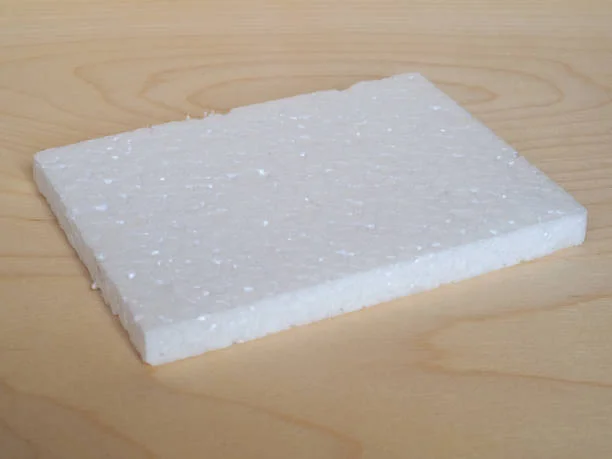
Cleaning Styrofoam requires a gentle approach to avoid damage. Whether it’s a food container or packaging, harsh chemicals and abrasive tools can degrade the material. Here’s a guide to effectively clean Styrofoam while preserving its integrity.
Step 1. Assess the Dirt and Type of Styrofoam
Before cleaning, identify the type of dirt and the specific Styrofoam item. Consider if it’s a food container needing sanitizing or packaging needing dusting. This assessment guides your cleaning method. For food-related items, thoroughness is key; for general packaging, a lighter touch might suffice.
Step 2. Gentle Cleaning for Light Dirt
For dust or minor non-greasy spills, a soft, dry cloth or a soft-bristled brush is usually sufficient. Gently wipe or brush away the debris. For slightly more stubborn dirt, a damp cloth with plain water can be used, ensuring it’s not dripping wet to avoid damage.
Step 3. Cleaning with Mild Soap for Heavier Dirt
For food residues or grease, a mild dish soap solution is effective. Mix a few drops of mild dish soap with warm water. Dampen a soft cloth or sponge with the solution, wring it out thoroughly, and gently wipe the soiled areas. Rinse with a separate, plain damp cloth to remove soap residue.
Step 4. Drying the Styrofoam
After cleaning with water or a soap solution, it’s crucial to dry the Styrofoam thoroughly. Gently pat it with a clean, dry cloth to absorb as much moisture as possible. Allow the Styrofoam to air dry completely in a well-ventilated area, away from direct sunlight or excessive heat.
How to Melt Styrofoam?
Melt Styrofoam? It’s possible, but requires caution and proper ventilation due to potential fumes. This process is often done for recycling purposes or to create denser polystyrene for various applications. Here’s a guide on how to melt Styrofoam.
Step 1. Prepare Your Workspace and Materials
Set up your workspace in a well-ventilated area, preferably outdoors or in a garage with open windows. Gather safety gear: chemical-resistant gloves, safety goggles, and a respirator mask. You’ll need Styrofoam pieces, a solvent like acetone (nail polish remover, paint thinner), a non-reactive container (glass or metal), and stirring tools.
Step 2. Submerge Styrofoam in Solvent
Carefully pour a small amount of acetone into your non-reactive container. Begin adding small pieces of Styrofoam, submerging them one by one. You’ll immediately notice the Styrofoam shrinking and dissolving rapidly into a gooey, viscous substance. Continue adding Styrofoam pieces until the acetone is mostly absorbed, or you reach the desired consistency.
Step 3. Collect and Dry the Melted Polystyrene
Once the Styrofoam has fully dissolved and you have a dense, sticky mass, carefully remove the solvent-saturated polystyrene. Place it on a non-stick surface, such as silicone mat or parchment paper, in a well-ventilated area to allow the residual acetone to evaporate. The material will become solid and much denser once completely dry.
Where Can You Buy Styrofoam?

You can purchase Styrofoam from the following places:
- Hardware Stores: Many hardware stores carry Styrofoam sheets, insulation boards, or packaging materials.
- Building Supply Stores: These stores often stock Styrofoam for construction and insulation projects.
- Online Retailers: Websites like Amazon, eBay, and specialized building material or craft supply websites offer a wide range of Styrofoam products.
- Craft Stores: If you’re looking for smaller pieces or Styrofoam for crafting purposes, craft stores may have what you need.
- Wholesale Suppliers: For larger quantities or commercial use, you can contact wholesale suppliers of building and insulation materials.
It’s important to note that in some areas, there may be restrictions on the use or sale of Styrofoam due to environmental concerns.
Is Styrofoam Worse Than Plastic?
While both Styrofoam (expanded polystyrene foam, a type of plastic) and other plastics pose significant environmental challenges, it’s complex to declare one definitively “worse” than the other, as their impacts differ.
Styrofoam is particularly problematic due to its lightweight and brittle nature, which causes it to easily break into tiny, pervasive microplastic pieces that readily spread through the environment and are ingested by wildlife. It is also notoriously difficult and uneconomical to recycle, leading to a vast majority ending up in landfills where it can persist for hundreds of years.
Furthermore, the manufacturing of polystyrene and its potential to leach styrene (a probable carcinogen) into food and drinks present human health concerns. While other plastics also contribute to pollution, microplastic formation, and rely on fossil fuels, their recyclability varies widely, and some forms may be more durable and reusable, thus potentially lessening their overall impact if properly managed and recycled.
Is It Better to Burn Styrofoam or Throw It Away?
Neither burning nor throwing Styrofoam away is a good solution. Burning Styrofoam releases highly toxic chemicals, including styrene, benzene, and carbon monoxide, which are harmful to human health and the environment. While landfilling avoids these immediate toxic emissions, Styrofoam is non-biodegradable, taking hundreds of years to break down and occupying significant landfill space.
Can Styrofoam dissolve in water?
No, Styrofoam (polystyrene) does not dissolve in water. It is a hydrophobic material, meaning it repels water and is insoluble, which is why it persists in the environment.
What can I do with large pieces of Styrofoam?
Due to limited recycling options, reusing large Styrofoam pieces is often the best approach. Consider using them for insulation in pet houses or sheds, as lightweight fillers for large plant pots, or for craft projects and model building. Some shipping stores or local art centers might also accept clean, intact pieces for reuse.
Conclusion
Ever wondered how those ubiquitous white foam products, from coffee cups to insulation boards, come to life? It all begins with tiny plastic beads and a fascinating transformation. This blog post will demystify the process, showing you exactly how raw polystyrene turns into the versatile material we know as Styrofoam.
Join us as we journey from seemingly insignificant polystyrene beads through a series of ingenious steps, ultimately revealing the secrets behind the creation of lightweight, durable, and incredibly useful EPS foam. The controlled application of steam and precise molding techniques are key to producing the diverse range of foam products we rely on daily.
For all your industrial and commercial needs, you can get wholesale styrofoam directly from us. We offer a comprehensive range of Expanded Polystyrene (EPS) foam products, ensuring quality and consistency for your specific applications.


